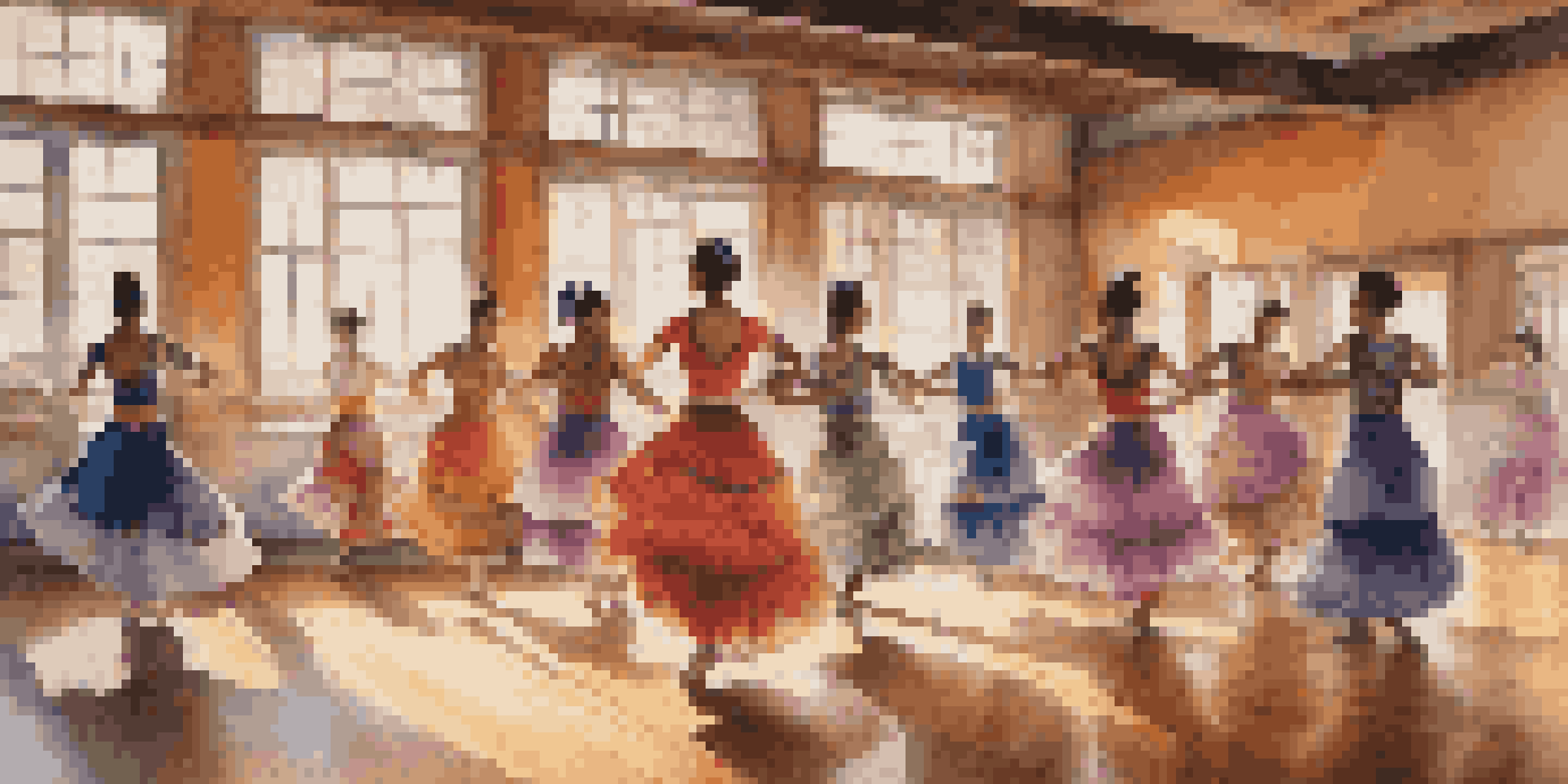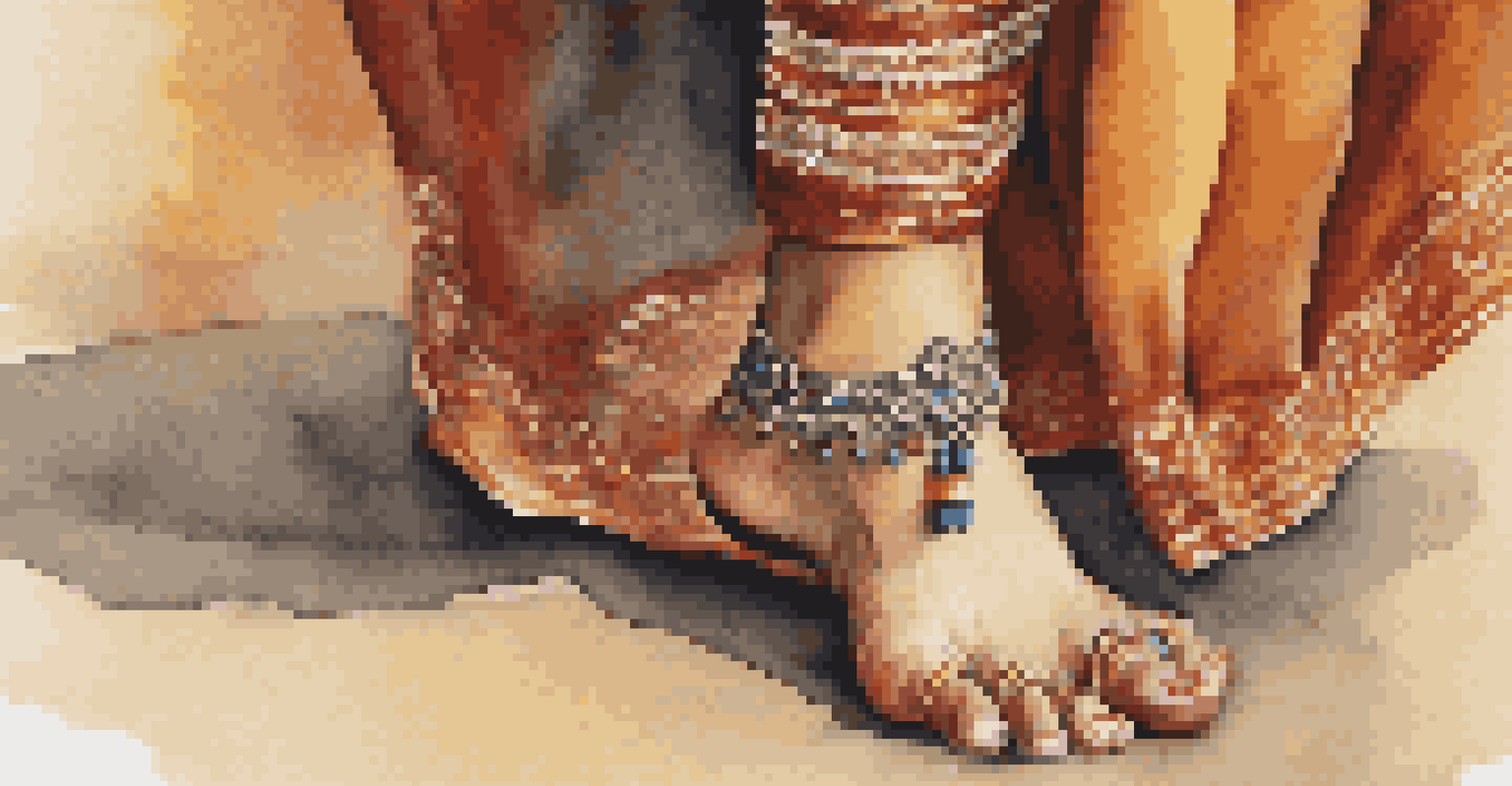Cultural Appropriation in Traditional Dance Forms Today

Understanding Cultural Appropriation in Dance
Cultural appropriation occurs when elements of one culture are used by another, often without permission. In the realm of traditional dance, this can manifest when dancers borrow styles, costumes, or movements from cultures that are not their own. While sharing and celebrating diversity is vital, it's essential to recognize the line between appreciation and appropriation.
Cultural appropriation is often seen as a form of theft, where the original creators are not acknowledged and the meanings behind their cultural practices are stripped away.
For instance, a dancer performing a traditional Indian classical dance without understanding its cultural significance might inadvertently strip it of its meaning. This can lead to misunderstandings and reinforce stereotypes rather than promote genuine cultural exchange. Understanding the roots and context of various dance forms is crucial for respectful representation.
To navigate this complex issue, it's important for dancers and choreographers to engage with the cultures they draw inspiration from. This can involve studying the history, attending workshops led by cultural insiders, and fostering respectful relationships with those communities. By doing so, artists can ensure that their work honors the traditions they represent.
The Impact of Social Media on Dance Appropriation
Social media has revolutionized how dance is shared and consumed, bringing diverse styles to a global audience. However, this accessibility also means that cultural appropriation can happen more quickly and widely than ever before. Viral dance challenges often take elements from traditional dances without acknowledging their origins, leading to conversations about respect and authenticity.

Consider a popular TikTok dance that borrows from a traditional African dance. While it may gain immense popularity, the original cultural context might be lost in the process. This raises questions: Are creators aware of where these movements come from? Are they giving credit to the cultures that inspire them?
Cultural Appropriation vs. Appreciation
Understanding the difference between cultural appropriation and appreciation is vital for respectful representation in dance.
To combat these issues, social media platforms and users can promote awareness by highlighting original sources and encouraging dancers to learn about the cultures they are engaging with. By creating a dialogue around these practices, we can foster a more respectful and informed dance community.
The Fine Line: Appreciation vs. Appropriation
Appreciation of a culture can lead to beautiful collaborations and exchanges, but it’s crucial to maintain a respectful approach. When dancers engage with traditional forms, they should do so with an understanding of the cultural significance behind their movements. This not only enriches their performance but also honors the cultural heritage that inspires them.
Dance is the hidden language of the soul, and when we borrow from others, we must do so with respect and understanding of its origins.
For example, a ballet dancer incorporating elements of traditional Hawaiian hula might do so in a way that respects the spiritual and historical context of hula. This kind of thoughtful integration can celebrate diversity rather than diminish it. However, failing to acknowledge the roots of these movements can easily tip into appropriation.
To navigate this balance, dancers should seek guidance from cultural practitioners and be open to feedback. This two-way street of learning allows for a richer, more authentic expression in dance while also fostering mutual respect and understanding.
Case Studies: Successful Cultural Collaborations
There are numerous examples of successful cultural collaborations in dance that highlight the beauty of shared traditions. One notable instance is the blending of hip-hop and traditional African dance forms, which has not only created new styles but also celebrated the richness of both cultures. These collaborations often involve direct engagement with community leaders and artists from the respective cultures.
In another example, the renowned dance company, Pilobolus, has worked closely with various cultural groups to create performances that respect and highlight traditional movements. By bringing cultural context into their work, these companies contribute positively to the conversation around appropriation, showcasing how appreciation can flourish into collaboration.
Social Media's Role in Dance
Social media has amplified the potential for cultural appropriation by quickly spreading dance movements without proper context or credit.
These successful partnerships illustrate how dance can be a powerful medium for cultural dialogue. They remind us that when done thoughtfully, blending traditions can lead to innovation while still honoring the roots of each style.
Navigating Cultural Sensitivity in Dance Education
Dance education plays a crucial role in shaping how future generations view cultural exchange. By incorporating lessons on cultural sensitivity and the history of various dance forms, educators can foster a deeper understanding among students. This knowledge is vital in helping dancers recognize the importance of respecting the cultures from which they draw inspiration.
For instance, a dance school that offers classes in traditional Indian dance should also include discussions about its history, significance, and the cultural context behind the movements. This holistic approach encourages students to appreciate the art form beyond just the physical techniques.
Moreover, inviting guest instructors from different cultural backgrounds can enrich the curriculum and provide authentic insights. This not only enhances the educational experience but also nurtures a generation of dancers who are more mindful and respectful in their practice.
The Role of Performance Art in Cultural Dialogue
Performance art has the unique ability to spark conversations about cultural identity and appropriation. Through dance, artists can express their perspectives on these issues, encouraging audiences to reflect on their own understanding of cultural exchange. This can be a powerful tool for raising awareness and promoting empathy among diverse communities.
For example, a contemporary dance piece that incorporates traditional elements while addressing issues of identity can provoke thought and discussion. By navigating the complexities of cultural representation, performers can use their art as a medium for social commentary, opening up spaces for dialogue.
Importance of Cultural Sensitivity
Incorporating cultural sensitivity and history into dance education fosters a deeper understanding and respect for the cultures being represented.
Ultimately, performance art can bridge gaps between cultures, allowing for shared experiences and greater understanding. When artists approach these conversations thoughtfully, they can contribute to a more inclusive narrative that celebrates diversity.
Moving Forward: Fostering Respectful Cultural Exchange
As we move forward in the world of dance, fostering respectful cultural exchange becomes increasingly important. Dancers, choreographers, and educators must engage in ongoing conversations about the implications of their work. By doing so, they can create a dance community that values authenticity and respect for cultural heritage.
This journey involves continuous learning, listening, and adapting. It’s essential for artists to seek feedback from cultural representatives and to be open to evolving their practices based on that input. Creating a culture of respect will not only benefit the individual artists but also enrich the entire dance community.

Encouraging collaboration, education, and dialogue can pave the way for a future where cultural appropriation is addressed thoughtfully and respectfully. Together, we can ensure that dance remains a vibrant, inclusive art form that celebrates the beauty of diversity.